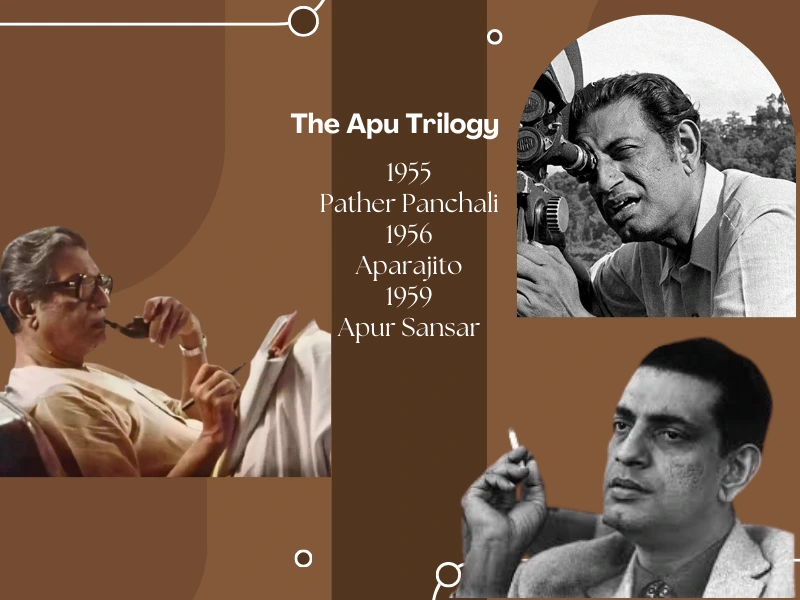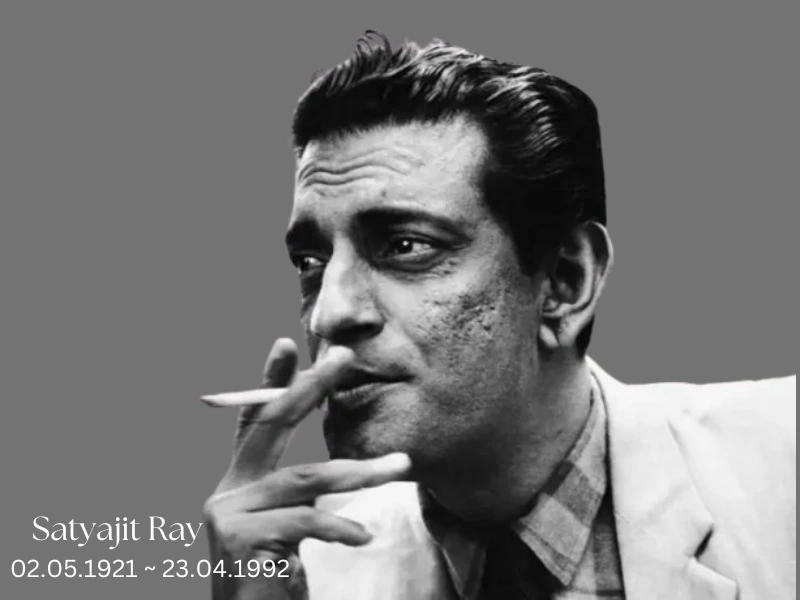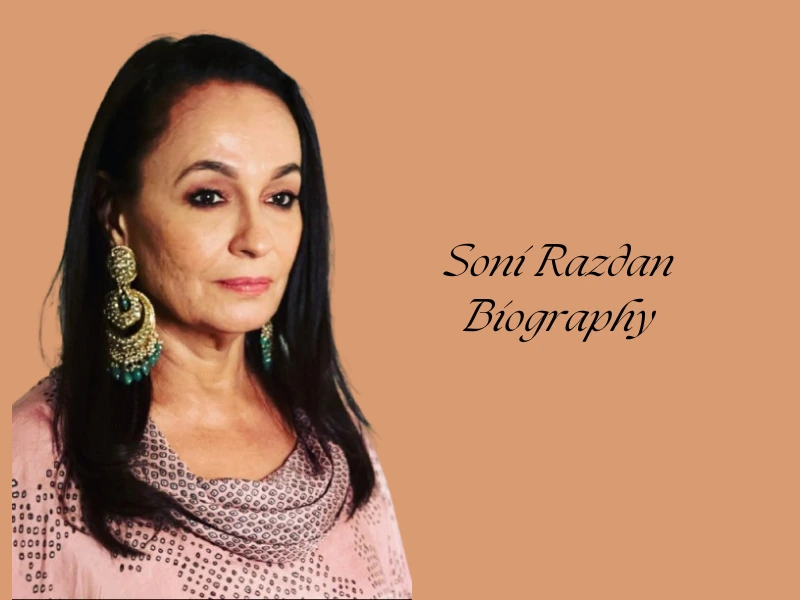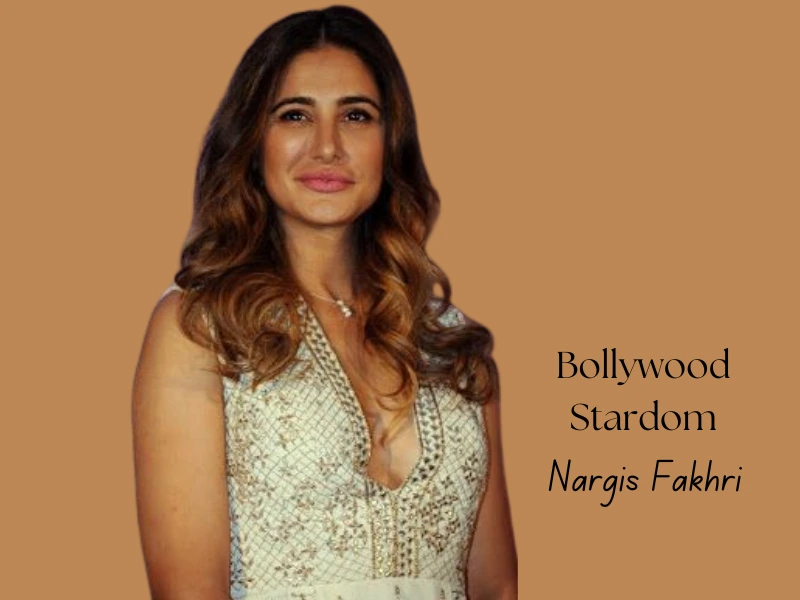Satyajit Ray: A Legendary Filmmaker, Writer, and Cultural Icon
Satyajit Ray is an artist’s name that resonates with artistic brilliance and cultural depth. He has been one of the greatest filmmakers in the history of cinema and has inspired all audiences across borders. From reshaping Indian cinema to leaving his indelible mark on world film culture, his multifaceted genius as a director, writer, and composer has immortalized him as a true legend. But who was Satyajit Ray beyond all the accolades? Let’s take a closer look at his extraordinary journey.
Personal Information about Satyajit Ray
- Full Name: Satyajit Ray
- Other Names: Manik
- Date of Birth: May 2, 1921
- Place of Birth: Calcutta, Bengal Presidency, British India
- Date of Death: April 23, 1992
- Place of Death: Kolkata, West Bengal, India
- Age at Death: 70 years
- Father: Sukumar Ray – A renowned Bengali poet, writer, and illustrator.
- Mother: Suprabha Ray.
- Grandfather: Upendrakishore Ray – A famous writer, musician, and publisher.
- Spouse: Bijoya Das Ray – Satyajit married his cousin Bijoya in 1949.
- Child: Sandip Ray – Their son, who followed in his father’s footsteps to become a filmmaker.
- Schooling: Ballygunge Government High School, Kolkata.
- College: Presidency College, Kolkata (Bachelor’s in Economics).
- Art Training: Attended Visva-Bharati University at Santiniketan, founded by Rabindranath Tagore, where he studied fine arts and developed a deep appreciation for Indian culture and art.
- Occupations: Film director, writer, illustrator, music composer, lyricist, author, & calligrapher
- Awards:
- Padma Shri (1958)
- Padma Bhushan (1965)
- Padma Vibhushan (1976)
- Dadasaheb Phalke Award (1984)
- Commander of the Legion of Honour (1987)
- Academy Honorary Award (1992)
- Bharat Ratna (1992)
Early Life and Background
Birth and Family Roots
Born on May 2, 1921, in Calcutta, which is now Kolkata, Satyajit Ray was a member of an elite family that deeply believed in the Bengal intellectual and cultural traditions. His grandfather, Upendrakishore Ray, was a known writer, publisher, and musician. His father, Sukumar Ray, was an esteemed poet and humorist. Artistic talent flowed in the veins of Ray and helped him shape up his fantastic career.
Education and Early Influences
Ray studied at Presidency College, Kolkata, and then joined Visva-Bharati University in Santiniketan, founded by Rabindranath Tagore. It is here that he nurtured his interests in fine arts, literature, and classical Indian traditions. This exposure to Tagore’s vision of East and West blending helped to shape Ray’s views and fueled his creative ambitions.
Career Beginnings
Initial Work in Advertising
Before stepping into filmmaking, Satyajit Ray worked as a commercial artist at an advertising agency. His flair for visual storytelling and graphic design shone through, and he even designed covers for books, including Jawaharlal Nehru’s Discovery of India.
Exposure to Global Cinema
A turning point in Ray’s life came in 1949 when he met French filmmaker Jean Renoir, who was visiting India to shoot The River. Later, watching Vittorio De Sica’s Italian neorealist film Bicycle Thieves ignited his desire to make films that reflected the everyday struggles of ordinary people.
Rise to Prominence as a Filmmaker
The Apu Trilogy
- Pather Panchali (1955)
- Ray’s debut film, portraying the struggles of a rural Bengali family. It won international acclaim and is considered a masterpiece.
- Aparajito (1956)
- The sequel to Pather Panchali, depicting Apu’s adolescence and his journey toward self-discovery.
- Apur Sansar (1959)
- The final installment in the trilogy, focusing on Apu’s adulthood, love, and fatherhood.
These films received many international awards, including the Best Human Document award at the Cannes Film Festival, which made Ray a visionary in cinema.
Unique Style and Approach
Satyajit Ray’s films were so simple yet so deep. He was a master of using natural light, real locations, and a subtle story that captured the depth of human emotions. Many of his films also had music composed by him, which further enhanced the authenticity of his work.
Contribution to Indian and World Cinema
Iconic Films Beyond the Apu Trilogy
While the Apu Trilogy remains Ray’s most celebrated work, his filmography boasts masterpieces like Charulata (1964), a poignant tale of love and loneliness, Jalsaghar (1958), and Devi (1960). Each film explored complex characters and thought-provoking themes, making them timeless.
- Charulata (1964)
- A poignant story of a lonely housewife set in 19th-century Bengal. Often cited as Ray’s most perfect film.
- Jalsaghar (1958)
- The tale of a wealthy landlord clinging to his fading glory amidst social change.
- Devi (1960)
- A critical exploration of blind faith and religious fanaticism.
- Teen Kanya (1961)
- A trilogy of short stories by Rabindranath Tagore, capturing the complexities of relationships.
- Mahanagar (1963)
- The story of a middle-class housewife stepping into the workforce highlights gender roles in society.
- Goopy Gyne Bagha Byne (1969)
- A fantasy musical about two village singers who receive magical powers, beloved by audiences of all ages.
- Ashani Sanket (1973)
- A powerful portrayal of the Bengal famine of 1943, reflecting Ray’s humanistic storytelling.
- Shatranj Ke Khilari (1977)
- A Hindi film exploring the political and cultural decline of Indian aristocracy before British colonization.
- Ghare Baire (1984)
- Based on Rabindranath Tagore’s novel, this film examines the conflicts between tradition and modernity during the Bengal partition.
Lesser-Known Gems
- Kanchenjunga (1962)
- Ray’s first color film, depicting a single day in the lives of an affluent family in Darjeeling.
- Pratidwandi (1970)
- A portrait of the struggles of a young graduate in the urban chaos of Calcutta.
- Agantuk (1991)
- Ray’s last film focuses on themes of trust, modernity, and human connections.
Pioneering Use of Themes
Ray’s films tackled social issues such as poverty, gender inequality, and the clash between tradition and modernity. His nuanced portrayal of Indian society resonated with audiences across cultures, bridging the gap between regional cinema and global appreciation.
Accomplishments and Recognition
Awards and Honors Received by Satyajit Ray
Satyajit Ray’s extraordinary talent as a filmmaker, writer, and composer earned him numerous prestigious awards and honors throughout his illustrious career. Here’s a comprehensive list of his most significant accolades:
International Awards
- Honorary Academy Award (1992)
- Satyajit Ray received an Honorary Oscar for Lifetime Achievement, recognizing his profound impact on world cinema. This was one of his most significant international honors.
- Cannes Film Festival
- Pather Panchali (1956): Best Human Document Award.
- Mahanagar (1963): Silver Prize for Best Direction.
- Berlin International Film Festival
- Aparajito (1957): Golden Lion of St. Mark (Best Film).
- Ashani Sanket (1973): Golden Bear Award.
- Venice Film Festival
- Aparajito (1957): Golden Lion (Best Film).
- Ray was also honored with the Golden Lion for Lifetime Achievement in 1982.
- BAFTA Awards
- Numerous nominations and awards, including special recognition for his contribution to British and international cinema.
- Tokyo International Film Festival
- Ray received the Akira Kurosawa Award, acknowledging his global influence on cinema.
National Awards (India)
- Bharat Ratna (1992)
- India’s highest civilian honor, awarded for his unparalleled contributions to art and cinema.
- Dadasaheb Phalke Award (1984)
- The highest honor in Indian cinema, celebrating Ray’s lifetime achievements in filmmaking.
- National Film Awards
- Ray won 32 National Film Awards, spanning categories like Best Director, Best Screenplay, and Best Feature Film. Some notable wins include:
- Pather Panchali (1956): Best Feature Film.
- Charulata (1964): Best Director.
- Goopy Gyne Bagha Byne (1969): Best Feature Film.
- Ray won 32 National Film Awards, spanning categories like Best Director, Best Screenplay, and Best Feature Film. Some notable wins include:
Other Prestigious Honors
- Ramon Magsaysay Award (1967)
- Recognized for his contributions to literature, creative arts, and communication.
- Legion of Honour (1987)
- France’s highest civilian award, celebrating his cultural contributions.
- Padma Awards
- Padma Shri (1958), Padma Bhushan (1965), and Padma Vibhushan (1976).
- BFI Fellowship (1983)
- Awarded by the British Film Institute for his contribution to cinema.
- Special Tributes
- Numerous retrospectives and tributes in international film festivals, including London, Tokyo, and New York.
Posthumous Recognition
Even after his passing in 1992, Ray’s work continues to receive global recognition:
- UNESCO Tribute: Several of his films were restored and included in UNESCO’s cultural heritage projects.
- Film Archives: Film festivals worldwide screen his works, celebrating his enduring influence on global cinema.
Legacy in the Film Industry
Ray’s influence extended to filmmakers such as Martin Scorsese, Akira Kurosawa, and Wes Anderson. His contributions continue to shape the art of storytelling in cinema.
Martin Scorsese on Satyajit Ray: A Tribute from One Master to Another
Martin Scorsese, one of the greatest filmmakers of all time, has often expressed his deep admiration for Satyajit Ray and his profound influence on global cinema. Scorsese, known for iconic films like Taxi Driver and Goodfellas, has cited Ray’s work as a source of inspiration and described him as one of the greatest humanist filmmakers in history.
What Martin Scorsese Said About Satyajit Ray
Scorsese has spoken extensively about Ray’s artistry and storytelling, highlighting the following aspects of his admiration:
- The Humanistic Approach: Scorsese appreciates the depth Ray can inject into human emotions and relationships through subtlety and authenticity. The Apu Trilogy, for instance, is deeply moving for its poetic realism and general universality.
- The Apu Trilogy’s Impact: He specifically praised Pather Panchali, Aparajito, and Apur Sansar, saying that these are masterpieces that went beyond cultural barriers. He always credited Ray with developing his idea of storytelling and character-oriented cinema.
- Ray’s Influence on Global Cinema: As Scorsese said, Satyajit Ray’s films are the testament to filmmaking as a universal language. According to Scorsese, he underlined the fact that the ability of Ray to narrate stories about deeply rooted life in India has found its echo all over the world.
Preservation of Ray’s Films
Martin Scorsese has actively supported the preservation and restoration of Satyajit Ray’s films. As a founder of The Film Foundation, Scorsese played a key role in restoring many of Ray’s classics, ensuring that future generations can experience his cinematic brilliance.
A Mutual Legacy
The connection between Martin Scorsese and Satyajit Ray exemplifies the bond between great filmmakers across cultures. Scorsese’s enduring respect for Ray underscores Ray’s universal appeal and his position as a pioneer of world cinema.
Books by Satyajit Ray
Apart from being a film legend, Satyajit Ray was a great writer, and his writings have carved a niche for himself in Indian literature. This filmmaker wrote novels, short stories, and essays that prove his great imagination and versatility as a narrator. A detailed list of his most prominent works and contributions is given below.
The Feluda Series
The Feluda series is Satyajit Ray’s most popular literary creation. These detective stories, written primarily for younger audiences, feature the brilliant and sharp-witted sleuth Feluda (Pradosh Chandra Mitter) and his cousin Topshe, narrated from Topshe’s perspective. Some of the most beloved stories in this series include:
- The Emperor’s Ring (Badshahi Angti)
- The very first story of Feluda, where the detective unravels a mystery involving a historic ring.
- The Golden Fortress (Sonar Kella)
- A classic tale involving reincarnation, treasure, and adventure, later adapted into a film directed by Ray himself.
- The Mystery of the Elephant God (Joi Baba Felunath)
- Another gripping mystery featuring the theft of a precious idol.
- The Royal Bengal Mystery (Royal Bengal Rahasya)
- A thrilling investigation set in the heart of a jungle.
- The Bandits of Bombay (Bombaiyer Bombete)
- Feluda takes on a daring mission to solve a high-stakes mystery.
The Feluda series spans 35 stories and remains a favorite among readers of all ages.
The Professor Shonku Series
Satyajit Ray also created the character of Professor Shonku, a scientist and inventor whose adventures take readers into the realm of science fiction. These stories reflect Ray’s fascination with science and the supernatural. Some standout stories include:
- The Diary of Professor Shonku (Professor Shonku O Diary)
- The introductory story that introduces the quirky yet brilliant scientist.
- Professor Shonku and the Egyptian Curse (Professor Shonku O Hariparer Manuskhab)
- A thrilling tale blending science and Egyptian mythology.
- Professor Shonku and the UFO (Professor Shonku O UFO)
- An imaginative story about extraterrestrial encounters.
Ray’s Shonku stories were ahead of their time, combining futuristic themes with Bengali cultural sensibilities.
Also read Martin Scorsese Biography
Short Stories and Anthologies
Satyajit Ray’s short stories often featured elements of mystery, suspense, humor, and the supernatural. Many of these stories were published in the Bengali magazine Sandesh, which was originally started by his grandfather. Some popular collections include:
- The Collected Short Stories of Satyajit Ray
- A compilation of his best short stories, translated into English.
- The Hungry Septopus and Other Stories
- A collection of stories filled with Ray’s trademark humor and wit.
- Stranger Stories (Ekei Bole Shooting)
- A mix of eerie and curious tales that captivate the reader’s imagination.
- Khagam
- A chilling tale of revenge and transformation, among his most famous works.
Children’s Stories
- The Adventures of Goopy and Bagha
- A delightful fantasy story about two singers blessed with magical powers, which Ray adapted into the beloved film Goopy Gyne Bagha Byne.
- Bonku Babu’s Friend
- A heartwarming tale of a simple man who befriends an alien.
Ray’s stories for children are marked by simplicity, imagination, and a strong moral undercurrent, making them timeless classics.

Satyajit Ray’s Drawings and Illustrations
Career in Graphic Design and Advertising
Before venturing into filmmaking, Satyajit Ray worked as a commercial artist at D.J. Keymer, a British advertising agency. During this period, he designed advertising campaigns, logos, and book covers, showcasing his flair for creating compelling visual content.
Some of his notable achievements in graphic design include:
- Book Covers: Ray designed striking covers for books such as Jawaharlal Nehru’s The Discovery of India and Jim Corbett’s Man-Eaters of Kumaon.
- Typography: He created unique Bengali typefaces, including Ray Roman and Ray Bizarre, which reflected his love for typography and design innovation.
Film Posters and Storyboards
One of the most remarkable aspects of Satyajit Ray’s artistry was his involvement in designing posters and storyboards for his films.
- Film Posters: Ray personally designed posters for his iconic films, including Pather Panchali, Charulata, Sonar Kella, and Goopy Gyne Bagha Byne. His minimalist yet evocative designs often became visual identities for the films.
- Storyboards: Ray meticulously created detailed storyboards for his films, planning every frame with precision. These sketches not only guided his filmmaking but also showcased his deep understanding of composition, lighting, and perspective.
Character Sketches for Feluda and Professor Shonku
As the creator of beloved literary characters like Feluda and Professor Shonku, Ray brought them to life through his drawings.
- Feluda Series: Ray illustrated the covers and internal sketches for the Feluda books, giving readers a vivid image of the sharp-witted detective and his adventures.
- Professor Shonku: His illustrations of Professor Shonku’s gadgets, inventions, and adventures reflected his imagination and technical precision.
Personal Life and Philosophy
Ray married Bijoya Das in 1949, and they had a son, Sandip Ray, who followed in his father’s footsteps as a filmmaker. Despite his global fame, Ray remained grounded, valuing his family and Bengali heritage.
Ray believed in the power of storytelling to inspire and educate. He remained committed to authenticity, often drawing from real-life experiences to craft his narratives.
Challenges and Struggles
In his later years, Ray faced health challenges, including heart problems. Despite these struggles, he continued to work, completing his final films with unwavering dedication.
Ray’s ability to achieve cinematic brilliance on limited budgets is a testament to his ingenuity and determination. His resourcefulness remains an inspiration for filmmakers worldwide.
Legacy and Cultural Impact
Ray’s innovative techniques from character-driven storytelling to music and sound helped leave an incredible legacy in the world cinema left behind. Ray’s work continues to be celebrated even after his death in 1992; Film retrospectives, books, and documentaries were dedicated to preserving Ray’s memory.
Satyajit Ray Film and Television Institute
Satyajit Ray Film and Television Institute (SRFTI) is one of India’s premier film schools, founded in Kolkata in 1995. It was named after the maestro Satyajit Ray and offers postgraduation courses in filmmaking, television production, and digital media. SRFTI enjoys a reputation for state-of-the-art facility and creativizing the narrative. Hence, SRFTI has emerged as a hub of training future filmmakers and media professionals.
Conclusion
Satyajit Ray’s life was a tapestry of creativity, passion, and resilience. As a filmmaker, writer, and cultural icon, his contributions have enriched the world of cinema and literature, leaving behind a legacy that inspires generations.
Famous Quotes about Satyajit Ray
Satyajit Ray’s genius as a filmmaker, writer, and artist has been praised by renowned personalities from across the globe. Here are some notable quotes celebrating his unparalleled legacy:
By Fellow Filmmakers
- Akira Kurosawa
“Not to have seen the cinema of Ray means existing in the world without seeing the sun or the moon.”- Martin Scorsese
“His work is in the company of that of living contemporaries like Ingmar Bergman, Akira Kurosawa, and Federico Fellini.”- Elia Kazan
“Ray’s films are the work of a man who is entirely at one with his culture, and who has, at the same time, an extraordinarily sophisticated knowledge of cinema.”By Actors and Artists
- Sir Richard Attenborough
“Satyajit Ray’s film work is amongst the most potent and compassionate that I’ve ever encountered.”- Wes Anderson
“Ray’s films are so full of grace and beauty, and his storytelling is so pure.”By Critics and Writers
- Pauline Kael
“Satyajit Ray is a giant of cinema. His films speak of life, people, and their emotions in a way that touches the soul.”- Andrew Robinson (Ray’s Biographer)
“Satyajit Ray is that rare artist who commands equal respect in the East and the West.”
FAQs
Is Satyajit Ray won the Oscar?
Yes, Satyajit Ray won an Honorary Academy Award (Oscar) in 1992 for Lifetime Achievement, recognizing his exceptional contribution to world cinema.
Why is Satyajit Ray so famous?
Satyajit Ray is famous for his groundbreaking films like the Apu Trilogy, his mastery of storytelling, and his ability to portray human emotions with realism and depth. He is regarded as one of the greatest filmmakers in cinema history.
Did Satyajit Ray marry his cousin?
Yes, Satyajit Ray married his cousin, Bijoya Das, in 1949. Their marriage was both a personal and creative partnership.
Is Satyajit Ray a legend?
Absolutely. Satyajit Ray is a legend for his unparalleled contributions to cinema, literature, and art. His influence continues to inspire generations of filmmakers and artists worldwide.



